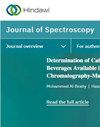基于模糊推理和决策级融合的可见光和近红外光谱分析的树种识别
IF 2.1
4区 化学
Q4 BIOCHEMICAL RESEARCH METHODS
引用次数: 5
摘要
提出了一种新的基于模糊规则分类器的树种光谱分类方案。采用USB 2000-VIS-NIR光谱仪和FLAME-NIR光谱仪采集木材样品横截面的可见/近红外(VIS/NIR)光谱反射率曲线。首先,采用主成分降维算法对光谱波段为376.64 ~ 779.84 nm和950 ~ 1650 nm的木材光谱曲线进行处理。木材光谱数据分为两个数据集,即训练集和测试集。利用训练集生成隶属函数和初始模糊规则集,对模糊规则进行调整,对分类规则进行补充和细化,形成一个完善的模糊规则集。其次,对可见光波段和近红外波段进行模糊分类。为了进一步提高树种识别的准确性,提出了一种改进的基于Dempster-Shafer (D-S)证据理论的决策级融合方案。使用测试集进行的测试结果表明,该方案对50种木材的总体识别准确率(ORA)达到94.76%,优于传统分类算法和目前最先进的木材种类分类方案。该方法具有较低的计算时间和空间复杂度,可以快速获得较好的识别效果,特别是在小数据集的情况下。本文章由计算机程序翻译,如有差异,请以英文原文为准。
Wood Species Recognition Based on Visible and Near-Infrared Spectral Analysis Using Fuzzy Reasoning and Decision-Level Fusion
A novel wood species spectral classification scheme is proposed based on a fuzzy rule classifier. The visible/near-infrared (VIS/NIR) spectral reflectance curve of a wood sample’s cross section was captured using a USB 2000-VIS-NIR spectrometer and a FLAME-NIR spectrometer. First, the wood spectral curve—with spectral bands of 376.64–779.84 nm and 950–1650 nm—was processed using the principal component analysis (PCA) dimension reduction algorithm. The wood spectral data were divided into two datasets, namely, training and testing sets. The training set was used to generate the membership functions and the initial fuzzy rule set, with the fuzzy rule being adjusted to supplement and refine the classification rules to form a perfect fuzzy rule set. Second, a fuzzy classifier was applied to the VIS and NIR bands. An improved decision-level fusion scheme based on the Dempster–Shafer (D-S) evidential theory was proposed to further improve the accuracy of wood species recognition. The test results using the testing set indicated that the overall recognition accuracy (ORA) of our scheme reached 94.76% for 50 wood species, which is superior to that of conventional classification algorithms and recent state-of-the-art wood species classification schemes. This method can rapidly achieve good recognition results, especially using small datasets, owing to its low computational time and space complexity.
求助全文
通过发布文献求助,成功后即可免费获取论文全文。
去求助
来源期刊

Journal of Spectroscopy
BIOCHEMICAL RESEARCH METHODS-SPECTROSCOPY
CiteScore
3.00
自引率
0.00%
发文量
37
审稿时长
15 weeks
期刊介绍:
Journal of Spectroscopy (formerly titled Spectroscopy: An International Journal) is a peer-reviewed, open access journal that publishes original research articles as well as review articles in all areas of spectroscopy.
 求助内容:
求助内容: 应助结果提醒方式:
应助结果提醒方式:


